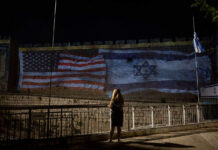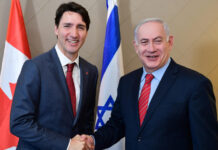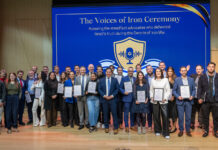One of the wisest things ever said about intermarriage came from former Atlantic sports columnist Jake Simpson: “No stat could have predicted … the wonder that was David Tyree’s helmet catch in Super Bowl XLII.”
Granted, Simpson wasn’t writing about the high rates of Jews marrying non-Jews. He was complaining that the growing emphasis on statistical analysis in sports — sabermetrics — was undermining the human element of the game. A statistician will tell you who is likely to catch a touchdown pass. But only ecstatic Giants fans (and heartbroken Patriots fans) could appreciate the glories of Tyree’s improbable reception.
Another sportswriter, Joe Posnanski, described it as “the human record versus the human heart.”
It’s not a stretch to recognize a similar argument among those who care about Jewish continuity and what it means to live a meaningful Jewish life.
And think tanks and sociologists are churning out statistics (Hebrewmetrics?) suggesting the dire toll intermarriage is taking on the strength and vitality of Jewish life.
According to a new analysis by the Jewish People Policy Institute (JPPI), of “non-haredi” – haredi here includes all Orthodox – American Jews aged 25 to 54, “just 21 percent are married to Jews, while well over twice as many [50 percent] are non-married and 29 percent are intermarried.” Only 15 percent of this cohort are in Jewish-Jewish marriages with Jewish children at home.
The implication, once you exclude the haredi and modern Orthodox, who often marry before age 25 — is that the non-Orthodox Jewish population is in a steep demographic decline, perhaps perilously so.
As authors Steven M. Cohen and Sylvia Barack Fishman point out in an essay for JTA, this decline is not only a function of intermarriage. It’s also the result of late marriage, no marriage and low birth rates.
Yet the Jewish engagement gap between the inmarried and the intermarried is “truly enormous,” according to JPPI. The inmarried are more likely to feel that being Jewish is very important, to have Jewish friends, to belong to a synagogue and to raising their children “in the Jewish religion.”
By contrast, “non-Jewish spouses and children in the home each seem to diminish the likelihood of Jewish engagement.”
These kinds of analyses alarm Jewish institutions; they seek answers in institutional ways. Should more money be invested in a highly engaged “core,” or spread among outreach to the “periphery?” Does the smart money go to the hip startups that are trying to attract less-engaged Jews, or to the legacy institutions that still have large (if shrinking) membership bases?
Just days after the JPPI study came out on June 5, there was a much different kind of reaction to the intermarriage “challenge” coming from clergy of at least three distinct stripes.
Clergy at B’nai Jeshurun, a big and influential synagogue on New York’s Upper West side, announced that they would begin officiating at the weddings of interfaith couples who commit to creating Jewish homes and raising Jewish children. Downtown, Rabbi Amichai Lau-Lavie, who runs the innovative Lab/Shul, said he, too, would officiate at intermarriages despite his training in the Conservative movement, which bans its rabbis from doing so.
And in an essay for The New York Jewish Week, self-titled-Orthodox Rabbi Avram Mlotek, who was ordained at the liberal Open Orthodox Chovevei Torah yeshiva whose graduates are not accepted at the umbrella association of Americann Orthodox rabbis, the RCA, suggested that “it’s time we revisit our tribalistic approach toward intermarriage and our highly divisive conversion practices.”
B’nai Jeshurun is not affiliated with a movement and its decision is internal; Lau-Lavie and Mlotek will have to deal with the consequences within their affiliated institutions. (Chovevei Torah already issued a statement reiterating that it forbids its rabbis from performing intermarriages.)
Critics of the “stat heads,” as a baseball fan might put it, say that the major studies and their authors treat the intermarried as a statistical burden rather than individuals, or that statisticians are working against forces they can’t resist and longing for a past that cannot be recaptured.
Meanwhile, the sociologists and pollsters are indeed deeply concerned about Jewish individuals, not just faceless Jewish “communities.”
They study Jewish belonging not because they are scolds, but because they believe that a vibrant Jewish community — with strong institutions, crowded events, knowledgeable members, and complex friendship and family ties — creates a deeply meaningful life. They believe Judaism is not only worth preserving for its own sake, but because of the difference it has made in the lives of individuals and the world.
And their research, as opposed to their gut, leads them to recommendations — and yes, judgments at a time when judging is out of favor.
The authors of the JPPI study take aim at their critics when they conclude, “Many regard all Jewish journeys and family configurations not only as equally valid, but as equally valuable for Jewish engagement and continuity.”
“In contrast with such avowedly non-discriminatory and non-discriminating thinking, our study demonstrates that Jewish spouses matter, Jewish children matter, and, more generally, the configuration of Jewish families matters a great deal for current Jewish engagement and future Jewish continuity.”
The battle for Jewish continuity runs right between the human record and the human heart.



























